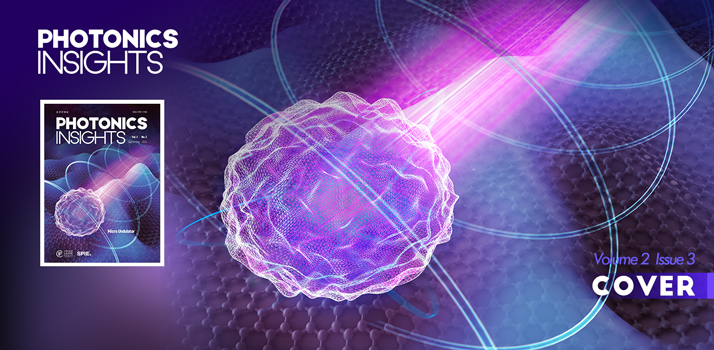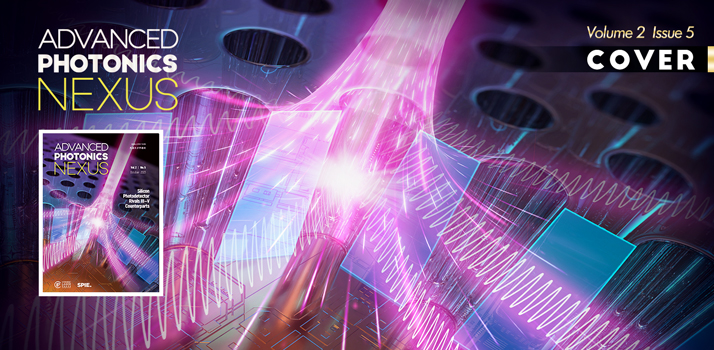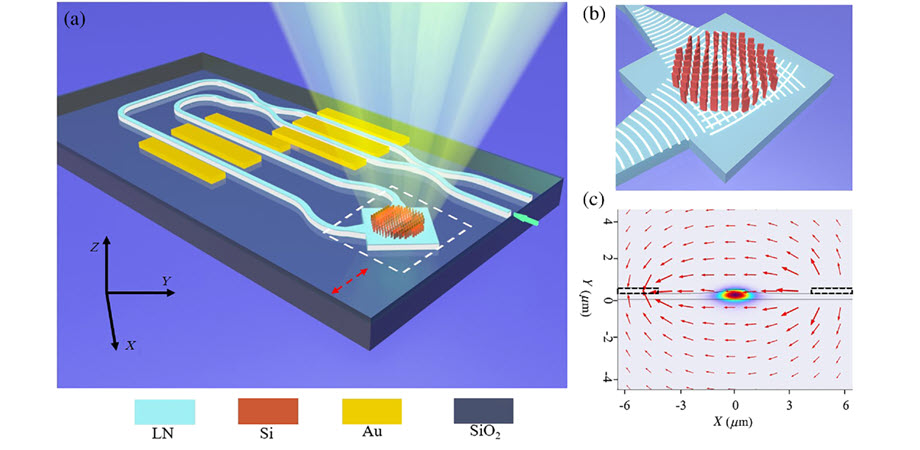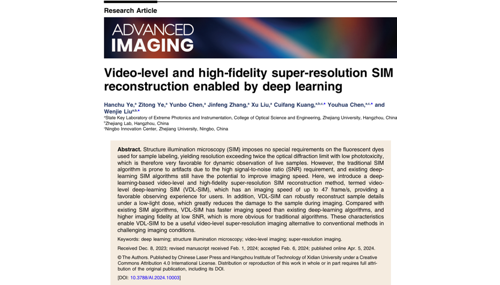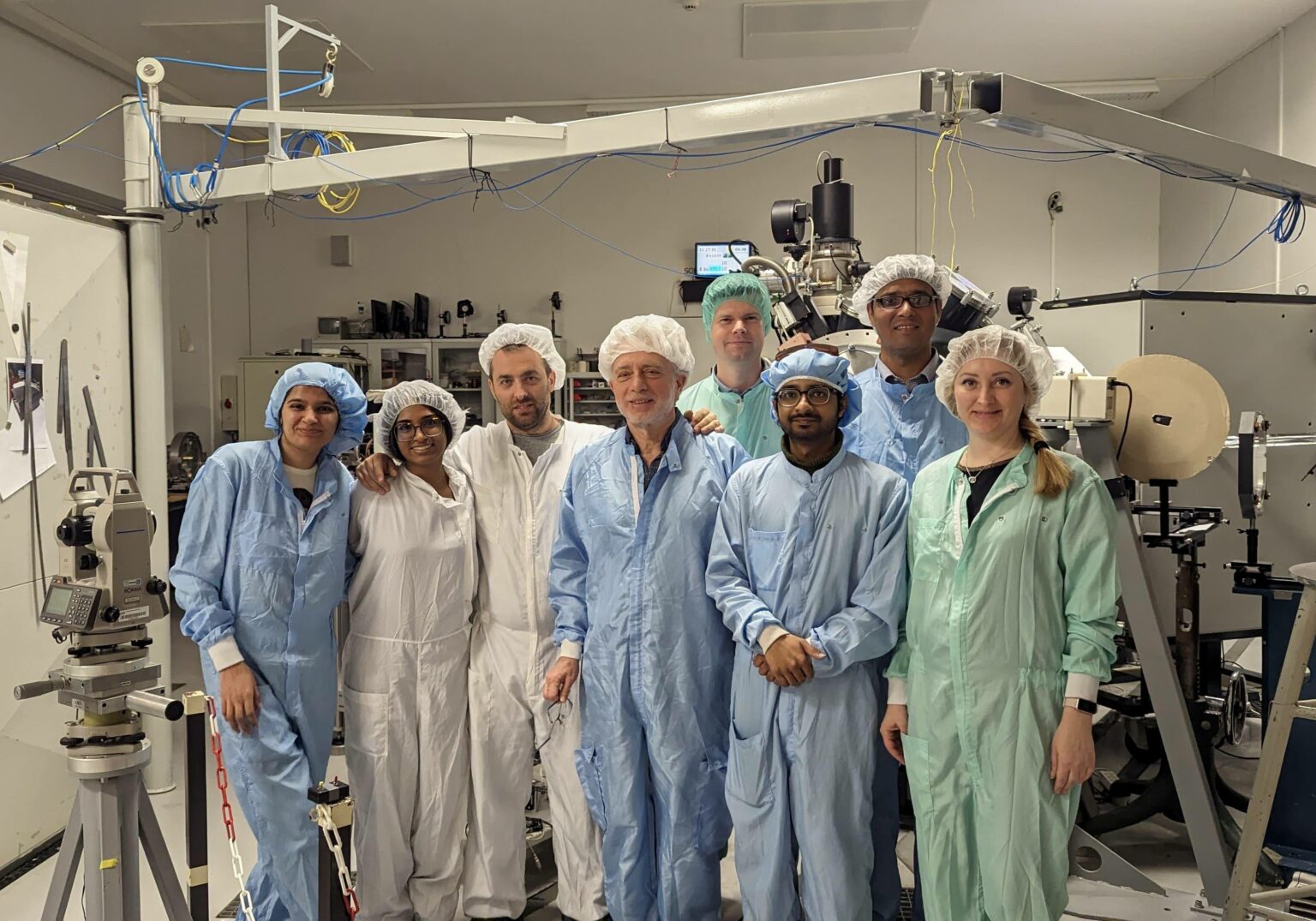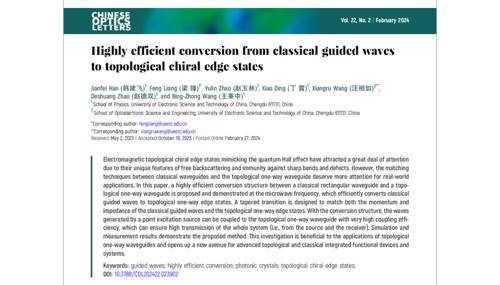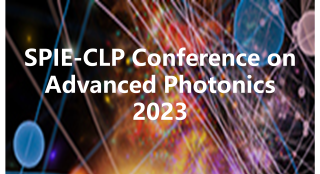- Apr. 26, 2024
- Vol. 6, Issue 1 (2024)
- Apr. 25, 2024
- Vol. 1, Issue 1 (2024)
- Apr. 25, 2024
- Vol. 12, Issue 2 (2024)
- Apr. 24, 2024
- Vol. , Issue (2024)
- Apr. 19, 2024
- Vol. 22, Issue 2 (2024)
An approach for frequency division of an optical pulse train (OPT) based on an optoelectronic oscillator (OEO) is proposed and experimentally demonstrated
An approach for frequency division of an optical pulse train (OPT) based on an optoelectronic oscillator (OEO) is proposed and experimentally demonstrated. When the OPT is injected into the OEO, a microwave signal with a frequency equaling fractional multiples of the repetition rate of the OPT is generated. This signal is then fed back to the OEO, maintaining its oscillation, while simultaneously serving as the control signal of a Mach–Zehnder modulator (MZM) in the OEO. The MZM acts as an optical switch, permitting specific pulses to pass through while blocking others. As a result, the repetition rate of the OPT is manipulated. A proof-of-concept experiment is carried out. Frequency division factors of 2 and 3 are successfully achieved. The phase noises of the OPT before and after the frequency division are investigated. Compared to previously reported systems, no external microwave source and sophisticated synchronization structure are needed.show less
- Apr.28,2024
- Chinese Optics Letters,Vol. 22, Issue 4
- 043902 (2024)
With the rapid development of sensor networks, machine vision faces the problem of storing and computing massive data. The human visual system has a very
With the rapid development of sensor networks, machine vision faces the problem of storing and computing massive data. The human visual system has a very efficient information sense and computation ability, which has enlightening significance for solving the above problems in machine vision. This review aims to comprehensively summarize the latest advances in bio-inspired image sensors that can be used to improve machine-vision processing efficiency. After briefly introducing the research background, the relevant mechanisms of visual information processing in human visual systems are briefly discussed, including layer-by-layer processing, sparse coding, and neural adaptation. Subsequently, the cases and performance of image sensors corresponding to various bio-inspired mechanisms are introduced. Finally, the challenges and perspectives of implementing bio-inspired image sensors for efficient machine vision are discussed.show less
- Apr.28,2024
- Advanced Photonics,Vol. 6, Issue 2
- 024001 (2024)
Based on the wavelength transparency of the Butler matrix (BM) beamforming network, we demonstrate a multi-beam optical phased array (MOPA) with an emitti
Based on the wavelength transparency of the Butler matrix (BM) beamforming network, we demonstrate a multi-beam optical phased array (MOPA) with an emitting aperture composed of grating couplers at a 1.55 μm pitch for wavelength-assisted two-dimensional beam-steering. The device is capable of simultaneous multi-beam operation in a field of view (FOV) of 60°
- Apr.28,2024
- Photonics Research,Vol. 12, Issue 5
- 912 (2024)
We propose a joint look-up-table (LUT)-based nonlinear predistortion and digital resolution enhancement scheme to achieve high-speed and low-cost optical
We propose a joint look-up-table (LUT)-based nonlinear predistortion and digital resolution enhancement scheme to achieve high-speed and low-cost optical interconnects using low-resolution digital-to-analog converters (DACs). The LUT-based predistortion is employed to mitigate the pattern-dependent effect (PDE) of a semiconductor optical amplifier (SOA), while the digital resolution enhancer (DRE) is utilized to shape the quantization noise, lowering the requirement for the resolution of DAC. We experimentally demonstrate O-band intensity modulation and direct detection (IM/DD) transmission of 124-GBd 4 / 6-level pulse-amplitude modulation ( PAM ) -4 / 6 and 112-GBd PAM-8 signals over a 2-km standard single-mode fiber (SSMF) with 3 / 3.5 / 4-bit DACs. In the case of 40-km SSMF transmission with an SOA-based preamplifier, 124-GBd on-off-keying (OOK)/PAM-3/PAM-4 signals are successfully transmitted with 1.5 / 2 / 3-bit DACs. To the best of our knowledge, we have achieved the highest net data rates of 235.3-Gb / s PAM-4, 289.7-Gb / s PAM-6, and 294.7 Gb / s PAM-8 signals over 2-km SSMF, as well as 117.6-Gb / s OOK, 173.8-Gb / s PAM-3, and -231.8 Gb / s PAM-4 signals over 40-km SSMF, employing low-resolution DACs. The experimental results reveal that the joint LUT-based predistortion and DRE effectively mitigate the PDE and improve the signal-to-quantization noise ratio by shaping the noise. The proposed scheme can provide a powerful solution for low-cost IM/DD optical interconnects beyond 200 Gb / s.show less
- Apr.28,2024
- Advanced Photonics Nexus,Vol. 3, Issue 3
- 036007 (2024)
In this paper, we have experimentally demonstrated a high power and high brightness narrow-linewidth fiber amplifier seeded by an optimized fiber oscillator. In order to improve the temporal sta
In this paper, we have experimentally demonstrated a high power and high brightness narrow-linewidth fiber amplifier seeded by an optimized fiber oscillator. In order to improve the temporal stability, the fiber oscillator consists of a composite FBG-based cavity with an external feedback structure. By optimizing the forward and backward pumping ratio, nonlinear effects and SRS-induced mode distortion of the fiber amplifier are suppressed comprehensively, accompanying with the simultaneous improvement of beam quality and output power. Furthermore, the TMI threshold is also improved by ~1.0 kW by coiling the gain fiber with a novel curvature shape. Finally, a 6 kW narrow linewidth laser is achieved with beam quality (M2) of ~1.4. The laser brightness has doubled comparing to the results before optimization. At the maximum output power,. To the best of our knowledge, it is the highest brightness narrow linewidth fiber laser based on one-stage MOPA structure.show less
- Apr.28,2024
- High Power Laser Science and Engineering
Double cone ignition (DCI) [Zhang et al., Phil. Trans. R. Soc. A 378: 20200015 (2020)] was proposed recently as a novel path for direct-drive inertial confinement fusion (ICF) using high power l
Double cone ignition (DCI) [Zhang et al., Phil. Trans. R. Soc. A 378: 20200015 (2020)] was proposed recently as a novel path for direct-drive inertial confinement fusion (ICF) using high power lasers. In this scheme, plasma jets with both high density and high velocity are required for collisions. Here we report preliminary experimental results obtained at the Shenguang-II upgrade laser facility, employing a CHCl shell in a gold cone irradiated with a two-ramp laser pulse. The CHCl shell was pre-compressed by the first laser ramp to a density of 3.75 g/cm3 along the isentropic path. Subsequently, the target was further compressed and accelerated by the second laser ramp in the cone. According to the simulations, the plasma jet reached a density of up to 15 g/cm3, while measurements indicated a velocity of 126.8 ± 17.1 km/s. The good agreements between experimental data and simulations are documented.show less
- Apr.28,2024
- High Power Laser Science and Engineering
Power scaling in conventional broad-area (BA) lasers often leads to the operation of higher-order lateral modes, resulting in a multiple-lobe far-field profile with large divergence. Here, we re
Power scaling in conventional broad-area (BA) lasers often leads to the operation of higher-order lateral modes, resulting in a multiple-lobe far-field profile with large divergence. Here, we report an advanced sawtooth waveguide (ASW) structure integrated onto a wide ridge waveguide. It strategically enhances the loss difference between higher-order modes and the fundamental mode, thereby facilitating high-power narrow-beam emission. Both optical simulations and experimental results illustrate the significant increase in additional scattering loss of the higher-order modes. The optimized ASW lasers achieve an impressive output power of 1.1 W at 4.6 A at room temperature, accompanied by a minimal full width at half maximum (FWHM) lateral divergence angle of 4.91°. Notably, the far-field divergence is reduced from 19.61° to 11.39° at the saturation current, showcasing a remarkable 42% improvement compared to conventional BA lasers. Moreover, the current dependence of divergence has been effectively improved by 38%, further confirming the consistent and effective lateral mode control capability offered by our design.show less
- Apr.28,2024
- High Power Laser Science and Engineering
We report on a high-efficiency, high-power tandem Ho:YAG single-crystal fiber (SCF) laser in-band pumped by a Tm-doped fiber laser (TDFL) at 1907 nm. In addition to the uniform heat distribution
We report on a high-efficiency, high-power tandem Ho:YAG single-crystal fiber (SCF) laser in-band pumped by a Tm-doped fiber laser (TDFL) at 1907 nm. In addition to the uniform heat distribution resulting from the large surface-to-volume ratio of this fiber-like thin crystal rod, the long gain region provided by the tandem layout of two SCFs enables high lasing efficiency and power handling capability. More than 100 W output power is achieved at 2.1 μm, corresponding to a slope efficiency of 70.5% and an optical-to-optical efficiency of 67.6%. To the best of our knowledge, this is the highest output power and efficiency ever reported from the SCF lasers in the 2-μm spectral range.show less
- Apr.28,2024
- High Power Laser Science and Engineering
- Journal
- 14th Apr,2024
- Journal
- 14th Apr,2024


![On the Cover: Terahertz polarization sensing, chirality enhancement, and specific binding based on metasurface sensors for biochemical detection: a review [Invited]](/Post/images/2024/1/img_News_133491772873656281.jpg)

